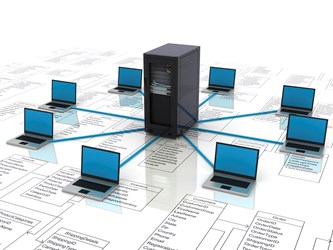Keeping Branch IT Current
By Nick East, CEO, Zynstra

The branch is a tough, hostile IT environment. The distributed nature of branch IT presents the IT team with a real and unique set of security and compliance challenges that are radically different from the datacenter. This is a problem, as retail branches are often on the front line when it comes to modern cyber-attacks.
Getting security wrong is not an option; a data breach can lead to eroding customer confidence and crippling regulatory fines, or loss of compliance certification. If a branch’s IT is breached in a mass crypto-locker attack, the entire store estate may be unable to operate essential trading systems or process customer transactions.
It is important branch IT doesn’t become the weak point in a retailer’s network that can be exploited. It’s not enough to invest in protecting just the head office or the datacenter — the branch network is the key battleground for security.
A Distributed Environment
Branch IT is, by its very nature, highly distributed and often remote, with limited — if any — local IT expertise. This can push up the cost of implementing and maintaining a branch security strategy and can disadvantage an already overstretched IT team when trying to mitigate or fix the problems of branch IT security.
Security is not just about implementing state-of-the-art applications, but about maintaining a secure IT infrastructure across distributed branches; ideally an infrastructure which has been designed from the ground up with security in mind.
Staying Up To Date
Among the most important security requirements for IT is to keep infrastructure current, apply security patches, and regularly install updates. It’s crucial, not only to protect infrastructure, but also to ensure it continues to comply with compliance frameworks.
Research from Verizon suggests over 70 percent of security breaches come from not keeping systems up to date. In fact, the impact of this year’s most infamous cyber-attack, the WannaCry ransomware attack in May, could have been mitigated if patches released by Microsoft two months earlier had been installed.
Within the highly distributed networks seen within the branch IT environment, keeping patches current and up-to-date is a non-trivial challenge. There is a complex supply chain that needs to be built and maintained upstream of any deployed systems. To reduce risk and make the task manageable, automation has to be at the heart of any viable current solution, otherwise the risk of manual error or omission becomes too great.
New Branch IT Demands
Retailers now utilize their branch IT for multiple workloads, from traditional requirements like point of sale (POS), inventory management, back office staff systems, and CCTV to newer requirements like scan-as-you-shop, digital shelf edge, digital signage, and RFID.
To deliver what retailers need, new branch IT must be fully virtualized to run all applications, but this cannot be allowed to increased complexity of management, keep current and security. And as many virtualization solutions are designed for datacenters — with inherent high levels of centralization, security, and local support skills — it’s important branch virtualization solutions come with branch scale and distributed management and security tools. If this is not the case, increased complexity can lead to increased cost and risk.
A New Approach
IT infrastructure needs to include back-office systems that perform quickly and effectively, and front office systems that deliver applications to enable speedy and compelling service. But, importantly in the branch environment, it needs low support overheads and no need for on-site expertise. Data center/cloud services are part of the answer, but in any retail environment to tackle these challenges, key retail applications and technology run locally for optimum efficiency, latency or performance.
To deliver the IT retailers need — powerful in-store IT without complex in-store management and security challenges — what’s required is a redefinition of computing capabilities in the branch, at the edge. This new branch IT must be fully virtualized to run all applications, centrally managed to lift the support burden, and easily deployed and adapted across a variable quality distributed network to deliver cloud levels of business flexibility.
A Retail Evolution
As retailers continue to adapt to changes in the market and consumer demand, it is critical they have the IT infrastructure in place that supports this evolution. The market is highly competitive and will, no doubt, continue to grow. The ones that survive will be the ones that embrace the latest technology to revolutionize the in-store environment for consumers.
Maintaining a distributed IT infrastructure comes with challenges, many of them security-related. But automation and the right tools can assist in preventing these cyber security attacks.
